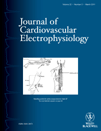Ventricular Tachycardia in the Era of Ventricular Assist Devices
David Cesario reports honoraria from Boston Scientific and Medtronic; Leslie A. Saxon reports honoraria from Boston Scientific and Medtronic; Michael Cao reports honoraria from Boston Scientific; Michael Bowdish reports participation on research grants supported by Terumo Heart, Inc. and Jarvik Heart, Inc.; Mark Cunningham reports participation on a research grant supported by Terumo Heart, Inc. and honoraria from Medtronic and St. Jude Medical.
Editor: Stephen C. Hammill, M.D.
Abstract
Ventricular Tachycardia in the Era of Ventricular Assist Devices. Sustained ventricular tachycardia (VT) in patients with advanced cardiomyopathy is a potentially life-threatening arrhythmia. Newer treatment strategies have evolved that combine the use of catheter ablation to target the substrate for VT and ventricular assist devices (VADs) to hemodynamically support the failing ventricle. This editorial is targeted to the practicing clinician caring for these difficult patients. The current article reviews the use of percutaneous VADs to support catheter ablation of VT, the use of durable VADs to support the failing heart in patients with recurrent VT, ventricular arrhythmias in patients with durable VADs, and the use of catheter ablation to treat VT in patients with durable VADs. (J Cardiovasc Electrophysiol, Vol. 22, pp. 359-363, March 2011)




